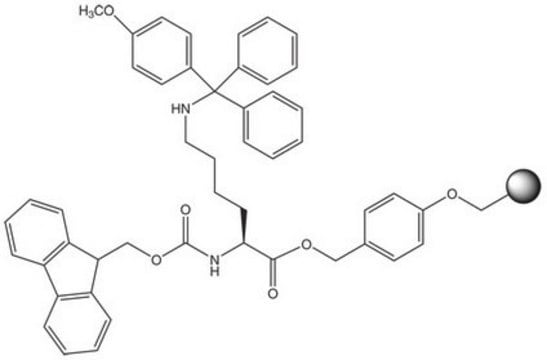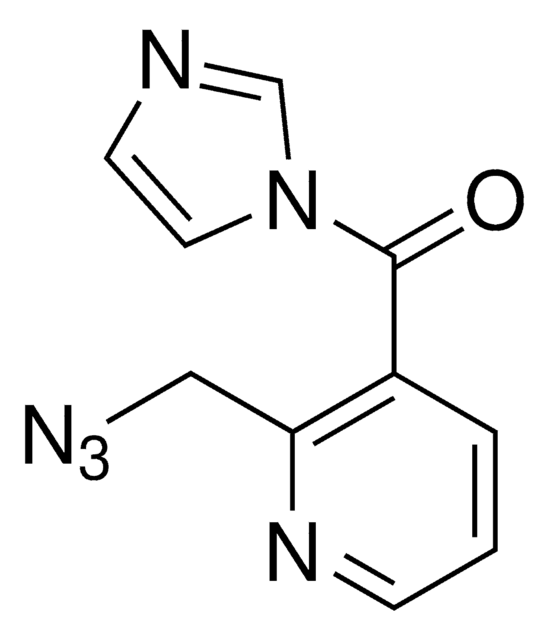907308
(3-(1,1-Difluoro-3-(triisopropylsilyl)prop-2-yn-1-yl)-3H-diazirin-3-yl)methanol
≥95%
Synonym(s):
Hydroxyl diazirine difluoro TIPS-alkyne, MI-PAL, Minimally interfering photoaffinity label, Photo-click tag, Probe building block
Sign Into View Organizational & Contract Pricing
All Photos(1)
About This Item
Empirical Formula (Hill Notation):
C14H24F2N2OSi
CAS Number:
Molecular Weight:
302.44
UNSPSC Code:
12352200
Recommended Products
Assay
≥95%
form
liquid
availability
available only in USA
storage temp.
−20°C
Application
(3-(1,1-Difluoro-3-(triisopropylsilyl)prop-2-yn-1-yl)-3H-diazirin-3-yl)methanol is a minimally interfering photo-affinity label (MI-PAL). Photoaffinity labeling is of growing interest in chemical biology and drug discovery research to characterize the non-covalent interactome and is used in protein profiling; the study of protein-protein interactions and complexes; and target engagement, identification, or validation studies. This MI-PAL contains a diazirine for UV light-induced (∼365 nm) covalent modification of a biological target with potential for downstream applications via the click chemistry-enabling alkyne tag. Its small size exhibits minimal perturbation of the interactions between proteins and the ligand or probe. The Woo lab demonstrated the electronic tuning of this MI-PAL with the placement of stability-imparting fluorine groups adjacent to the diazirine and alkyne. The alkyl fluorine ion losses are also a useful marker in collision-induced dissociation (CID) mass spectrometry experiments. Use alone or in parallel with other multi-functional building blocks to discover the optimal probe for your chemical biology experiments.
related product
Product No.
Description
Pricing
Signal Word
Danger
Hazard Statements
Precautionary Statements
Hazard Classifications
Self-react. C
Storage Class Code
5.2 - Organic peroxides and self-reacting hazardous materials
WGK
WGK 3
Flash Point(F)
Not applicable
Flash Point(C)
Not applicable
Certificates of Analysis (COA)
Search for Certificates of Analysis (COA) by entering the products Lot/Batch Number. Lot and Batch Numbers can be found on a product’s label following the words ‘Lot’ or ‘Batch’.
Already Own This Product?
Find documentation for the products that you have recently purchased in the Document Library.
Our team of scientists has experience in all areas of research including Life Science, Material Science, Chemical Synthesis, Chromatography, Analytical and many others.
Contact Technical Service




![tert-Butyl (R)-3-(2-acetamidopropan-2-yl)-6-chloro-5-methyl-2,3-dihydrospiro[indene-1,4′-piperidine]-1′-carboxylate](/deepweb/assets/sigmaaldrich/product/structures/719/283/e2c466e0-b4df-4961-9844-bfffbe187f3e/640/e2c466e0-b4df-4961-9844-bfffbe187f3e.png)



